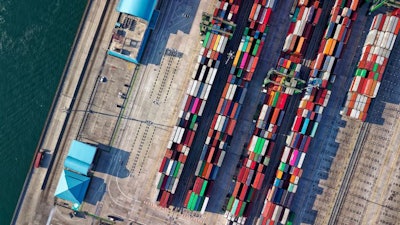
Pet food and pet product supply and transportation issues stemming from the pandemic are likely to continue throughout 2021 and into the first part of 2022, said Steve King, president and CEO of the American Pet Products Association (APPA), even as the U.S. pet care market has experienced notable growth that will also carry through this year.
Presenting a “state of the industry keynote” during Global Pet Expo (GPE) Digital Access 2021, King explained reasons for the disruptions, beginning with increased, and changing, consumer demand for pet foods and other pet products. After the initial spike in sales in March 2020 as pet owners stocked up during pandemic lockdowns—King’s co-presenter, Celeste Powers, president of the Pet Industry Distributors Association, called this “emotional stockpiling”—there was an inevitable decline. But then pet food and pet care sales rebounded as owners practiced “thoughtful stockpiling” later in 2020 and as more people added pets to their households.
As a result, the latest APPA data on the total U.S. pet market showed growth of 6.7% in 2020, reaching US$103.billion for the year—the first time sales have ever topped US$100 billion, King noted. One growth driver was pet food, which increased 9.7%, hitting US$42 billion.
Much of the growth also came from e-commerce. In separate GPE presentations, David Sprinkle, publisher and research director at Packaged Facts, said e-commerce accounted for 30% of the overall U.S. pet care market, up from 24% in 2019. Specific to pet food, Brad Boldridge, director of neighborhood pet retail for Nielsen, said U.S. pet owners spent 46% more on pet food online in 2020 vs. 2019.
Increased demand and pandemic disrupted supply chains
Though positive news, this healthy growth, especially in e-commerce, had a significant impact on supply chains in the pet industry, Powers and King said, leading to some product and raw material shortages that continue today. Initially, domestic product manufacturers had difficulty increasing or shifting production quickly enough, according to King. “Production forecasting is based on the historical ebb and flow of business over the course of the year, and COVID really disrupted those patterns.”
Related to that, manufacturers also had to change worker safety protocols due to the pandemic and schedule around missing workers due to illness or quarantining. They have also faced worker shortages and increased competition for production workers from rapidly growing companies like Amazon, a challenge that persists in 2021.
Spot shortages of raw materials, from pet food ingredients to resins for some pet care hard goods to certain packaging materials, like aluminum cans for wet pet food, arose and continue now. These shortages have increased costs; King cited data from the National Association of Manufacturers (NAM) that raw materials costs rose at the swiftest rates since 2008.
From an international market perspective, the same demand surges in the U.S. happened around the world, leading to a shortage of imported products and raw materials. Significantly exacerbating the situation have been factors involved in international shipping, also dramatically affected by the pandemic, King said. Challenges include:
- Shortages in ground transportation equipment;
- Fewer ships and containers available;
- Exploding prices for containers, from US$3,200-3,500 pre-COVID to US$9,000 to $10,000 today;
- Logjams at U.S. West Coast ports, resulting in significant delays in unloading products from ships onto trucks, with lead times to retailers doubling from 60 to 120 days.
Disruptions, increased costs expected to continue
These supply chain disruptions are expected to continue through 2021 and into the first part of 2022, King said. Again using data from NAM, he reported that the backlog of orders is the largest since 2004. “Inflation in the freight sector will continue to be an issue as well, so costs are going to continue to be high right through the summer (2021), and then we will probably start seeing some easing in the fourth quarter,” King said. “So the bottom line on production is that fill rates have been dramatically impacted and are not likely to improve in the short term.”
That means customer allocations are continuing; at best, manufacturers are able to fill about 70% to 75% of the orders they’re receiving, King said, and that is expected to last through the first part of 2022. In addition, the increased costs for raw materials and shipping are likely to be passed along to retailers and, ultimately, consumers before long.

















